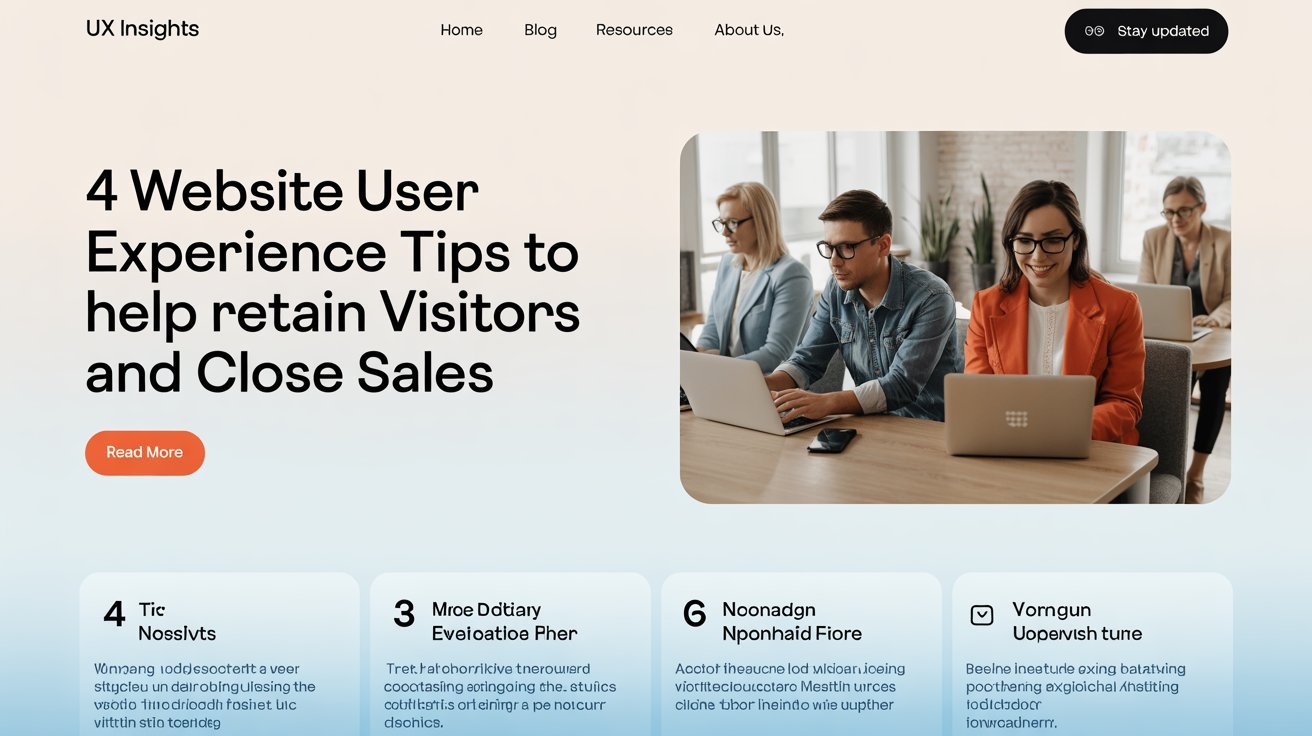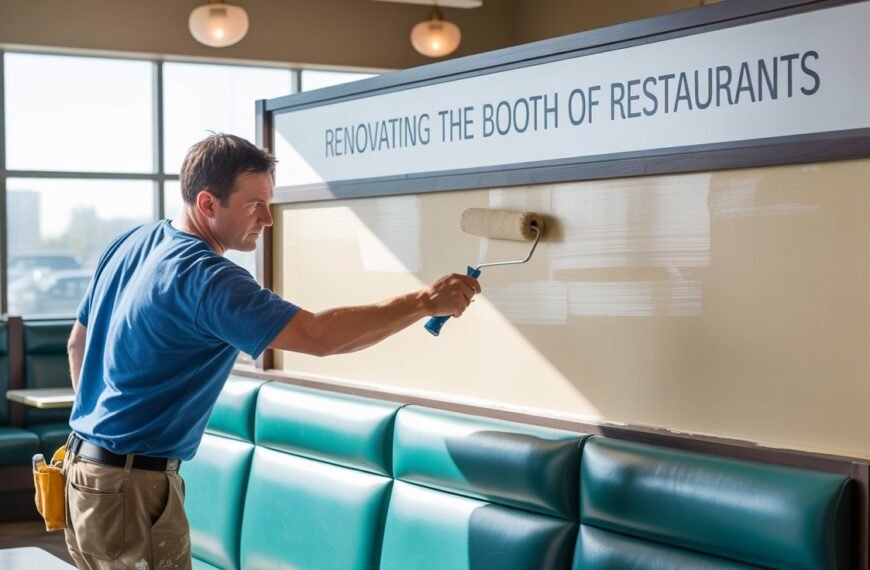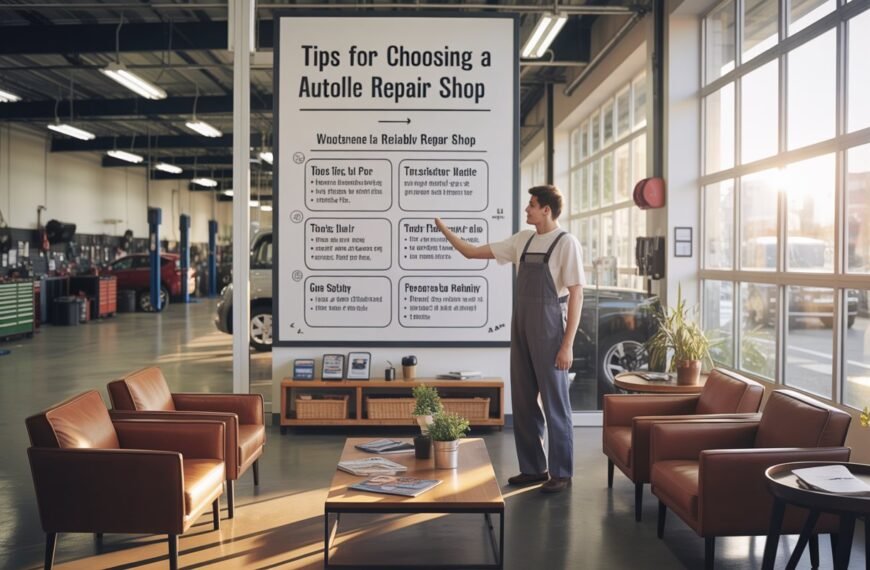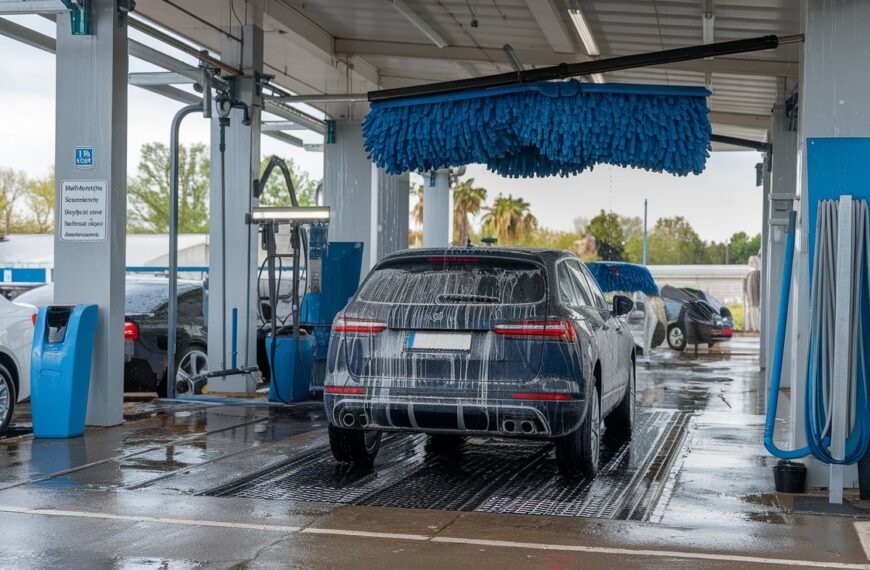What do you do when you walk into a store and it is cluttered, confusing, or things are hard to find? You leave, don’t you? A website works in much the same way.
Your website’s user experience shapes every interaction potential customers have with your brand. A smooth, intuitive experience builds trust and guides visitors naturally toward making a purchase or getting in touch. On the flip side, a confusing or frustrating website sends people running to your competitors.
So, if you’re noticing an uptick in your website’s traffic but it isn’t converting into customers, improving the user experience can make a difference.
Here, we’ll share a few tips that can help you improve your website user experience, which in turn can retain visitors and close sales.
1 Design Intuitive Navigation
A website’s navigation acts like a friendly map, helping visitors find what they need without getting lost or frustrated. When navigation is confusing, people tend to leave the site quickly.
For a positive experience, clear navigation is important. Simplicity is your best friend here. Do not overload menus with too many choices; too many options can make people leave. Use clear, everyday words for your menu labels, like ‘Home,’ ‘About Us,’ or ‘Contact’. Avoid using jargon that might confuse your visitors.
Group related items together logically. If subcategories are needed, use dropdowns carefully.
Put the most important pages front and center. A good rule is that nothing critical should be more than three clicks away.
Visual cues are super helpful. Make links change color when a mouse hovers over them. Use icons next to text for quick understanding. A search bar is also a must-have. That lets people jump straight to what they are looking for.
Visitors expect navigation in standard places, usually at the top or down the left side. Sticking to these familiar patterns helps them find their way without thinking too hard.
2 Guide with Clear Calls-to-Action (CTAs)
Your call-to-action buttons are the bridge between interest and action. They gently guide users toward making a purchase, signing up for a newsletter, or learning more about a product. Without clear CTAs, visitors might feel lost and unsure of their next step.
For CTAs to work well, they need to stand out without being overwhelming. Using contrasting colors, larger sizes, and plenty of white space around them helps them pop. However, it is important to avoid making them garish or obnoxious; they should blend nicely with the overall design while still being noticeable.
It’s important to place them strategically. Position your primary CTAs where eyes naturally settle, like the bottom right of a page. This can significantly increase clicks.
Don’t overload a page with too many CTAs. Too many options can lead to cognitive overload, making visitors confused and causing them to do nothing at all. One clear path is usually best.
Adding a little urgency, like “Limited Time Offer” or “Shop Today,” can also encourage quick action.
3 Adopt Mobile-First Approach
Take a look around; you’ll see most people on their phones, browsing the internet, probably.
In fact, research shows that a little over 60% of global website traffic comes from mobile phones. That alone is reason enough to adopt a mobile-first approach.
A mobile-first approach means you design for phones first, focusing on the most important content and functions, then expand for bigger screens.
Prioritize content when optimizing your site for mobile devices. Hocoos advises placing key elements like core pieces of text and product descriptions right in the middle and at the top of your page.
Second, make sure that buttons and links are touch-friendly. They need to be large enough for easy tapping, with sufficient space around them to prevent accidental clicks. Third, fast loading times are non-negotiable.
Simplify navigation as well. To keep navigation tidy and accessible on mobile devices, use a hamburger menu.
Feeling overwhelmed? You don’t have to tackle it all manually. An AI-powered website builder can help you relaunch your website with a mobile-first design baked in. It automatically arranges content, streamlines navigation, and optimizes performance, so your site looks polished, loads fast, and works seamlessly on any device.
4 Simplify the Checkout Process
The checkout or contact process is where sales happen. But it’s also where many people drop off if there are any bumps in the road. Even small inconveniences here can lead to lost sales.
For checkout, simplicity is key. Only ask for the necessary information. Every extra field can make people abandon their cart.
Guest checkout is a must. Do not force people to create an account. Many prefer to check out as a guest. You can suggest account creation after they make a purchase.
Always show all costs, like shipping and taxes, upfront to avoid surprises at the very end. Hidden fees are a major reason people abandon their carts. Offer various payment methods, including popular digital wallets like Apple Pay or PayPal, to cater to everyone’s preferences.
Also, keep the checkout page free of distractions like pop-ups or unrelated links, so visitors stay focused on completing their purchase.
See? Improving your website’s user experience doesn’t mean you must overhaul everything. Just a few thoughtful tweaks can make a big impact.
So, focus on these areas and you will create a website experience that feels natural and helpful rather than an obstacle to overcome. Remember, every improvement you make should serve the goal of making it easier for visitors to do business with you.








